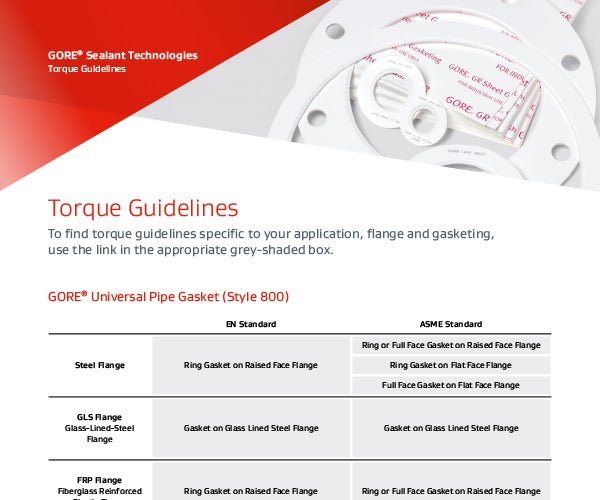
With decades of storied legacy in the aerospace industry, W. L. Gore & Associates has created technology innovation and provided proven solutions to civil air suppliers. We’re a trusted partner working closely with aerospace companies to deliver reliable components with approved aerospace materials that save time, money and so much more. They know that our solutions keep pilots, cabin crew and passengers connected, protected and safe for the entire flight.

From the outset, W. L. Gore & Associates engineers products right to perform reliably in the most demanding air and land conditions. Our storied legacy is why defense companies and suppliers trust our cables and materials.

Torque Guidelines: All Applications for GORE® Universal Pipe Gasket (Style 800) and GORE® GR Sheet Gasketing
Installation Guides, 920.26 KB
This document provides torque guidelines for ring and full-face GORE® Universal Pipe Gasket (Style 800) and GORE® GR Sheet Gasketing according to EN and ASME Standards for steel, glass-lined steel and fiber-reinforced plastic flanges.

Since the 1960s, W. L. Gore & Associates has delivered trusted space components and aerospace materials to industry suppliers with a 100% failure-free success rate. We develop technology innovation for the design challenges inherent in space missions and provide proven reliable solutions to space companies. Over the decades, Gore’s products have contributed to the success of hundreds of global spaceflight programs — including the first moon landing.
Starting with Gore ends in success. Watch our video and start your next spaceflight project with us.
Visit GORE at Bioprocessing Summit Europe 2022 March 22, 2022 - March 24, 2022 Barcelona, Spain